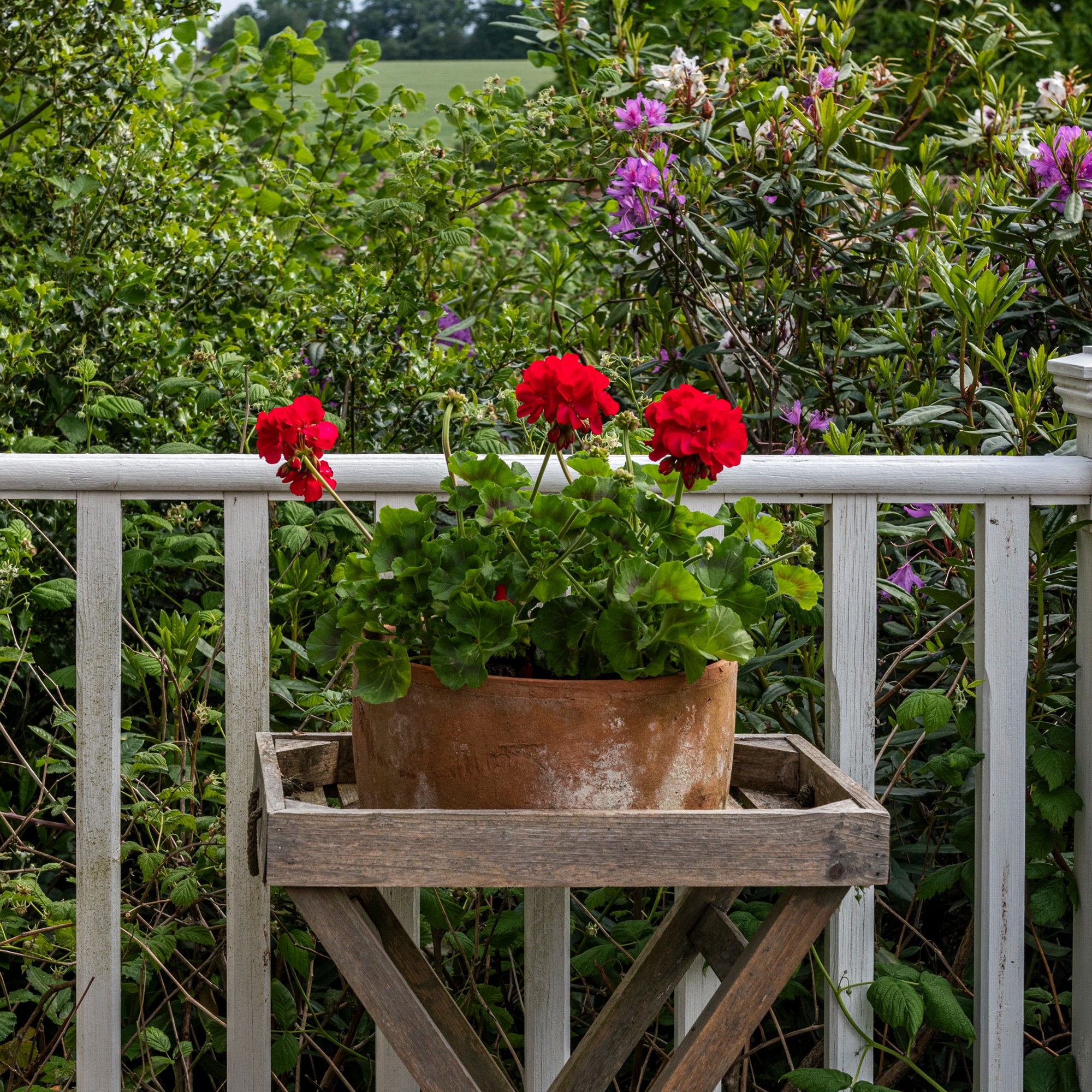Why are my geranium leaves turning red? Experts reveal 3 mistakes you might be making
Avoid this common geranium problem


It's flowering season for geraniums, and it's easy to see why they make such popular plants in the garden. 'But why are my geranium leaves turning red?', you might ask.
Well, it's a more common problem than you might think, and it has a lot to do with simple watering mistakes.
'When geranium leaves start to turn red, it indicates that something is wrong and the plant is under stress,' advises John Clifford, director at Gardenstone. 'Although the bright red leaves have a beautiful appearance, it's crucial that the issue is addressed in order for the geranium to return to full health.'
So, if you've nailed how to grow geraniums and are looking to solve this popular issue with the plant, you've come to the right place.

John Clifford is a director of Gardenstone, a leading garden landscaping retailer based in the UK. With over 30 years in the gardening industry and continual work alongside The National Trust, John has amassed an extensive range of gardening and planting knowledge. Alongside his younger son, John has built a strong reputation for Gardenstone as a trusted source for both high-quality garden products and expert gardening advice.
Why are my geranium leaves turning red?

If your geranium leaves are turning red, the plant is likely stressed.
The list of potential stressors is long, but we've asked the experts for the most likely suspects.

1. Your geraniums have a nutrient deficiency
'Geranium leaves change colour when they lack nutrients,' says Monique Gudgeon, garden director at Sculpture by the Lakes.
Sign up to our newsletter for style inspiration, real homes, project and garden advice and shopping know-how
The missing nutrients are likely magnesium and phosphate, but luckily, a wide range of feeds exist to counteract the deficiency.
'If you notice discolouration on your geranium leaves, make sure you water the plant and provide it with plenty of feed,' advises Monique. 'It’s important to remember that geraniums in a pot rely solely on you for water and nutrition – it’s best to water and feed it once a week.'

What you'll need
2. You're overwatering your geraniums
Overwatering is easily done - and if you're wondering if you can overwater plants in the summer, the answer might surprise you.
'I recommend two thorough waters a week, but be careful not to overwater as this can also affect the health of the plant,' advises John.
Knowing the signs of an overwatered geranium can help you make changes before it's too late for the plant.
According to John, the symptoms are noticeable: 'When geraniums are overwatered, their leaves start to turn limp and yellow. The roots will also start to rot.'
3. You're not watering them enough
On the other side of the coin, underwatering can be an alternative reason why your geranium leaves are turning red.
In some cases, red geranium leaves can actually be a sign of inadequate watering,' says John. 'To rule this out, you can look out for curling of the leaves and check at the base of your geranium. If the soil is parched, it might be a good idea to water the plant more regularly.'

FAQs
Why are my geranium leaves changing colour?
Yellow geranium leaves are another common geranium issue. Besides watering mistakes, there is another likely culprit for yellowing geranium leaves.
'Geranium leaves will likely start to change colour due to a lack of sunlight,' explains John from Gardenstone. 'Geraniums are sun-loving plants, so they need to be planted in a full-sun area of your garden that is free from shade.'
How can you tell the difference between an overwatered geranium and an underwatered geranium?
'If you stick your finger in the soil around your geranium and it’s dry, that is usually a sign that it needs water,' Says Monique from Sculpture by the Lakes. Additionally, you can lift the pot and feel its weight. If it's noticeably light, this can also mean that it’s dry.'
'On the other hand, overwatered geraniums will have slimy roots and damp soil.'
You can also tell the difference between an overwatered geranium and an underwatered geranium by looking at the leaves.
'Overwatered geraniums can be identified by their yellow limp leaves,' explains John from Gardenstone. 'Although underwatered geraniums may also have yellow leaves, they will likely have curled edges instead of being limp due to their dry roots.'
Red geranium leaves are more common than you think, but with a few changes to the way you care for the plants, you could avoid the issue altogether.

Sophie joined the Ideal Home team as Gardens Editor in June 2024. After studying English at Royal Holloway, University of London, she began writing for Grow Your Own, which spurred on her love of gardening. She's tried growing almost every vegetable under the sun, and has a soft spot for roses and dinnerplate dahlias.
As Gardens Editor, Sophie's always on the lookout for the latest garden trend. She loves sharing growing hacks for every space, from herbaceous borders to balconies.


